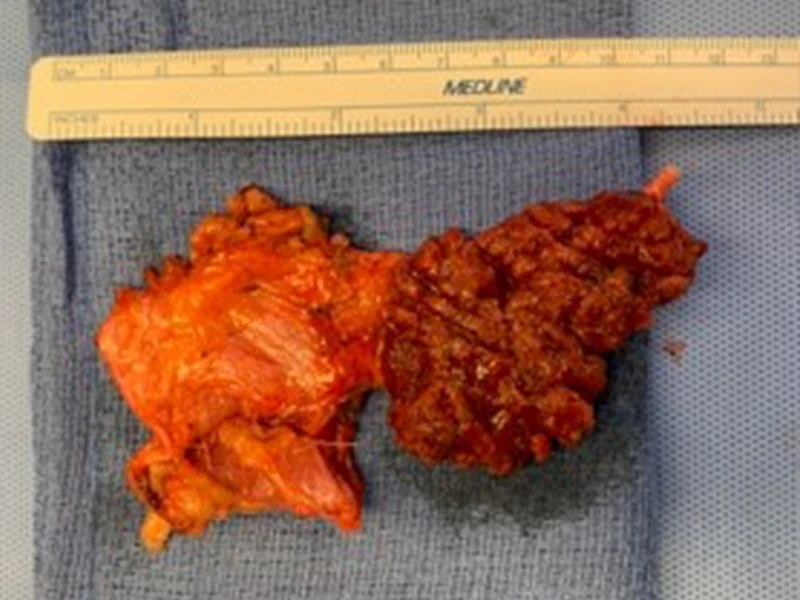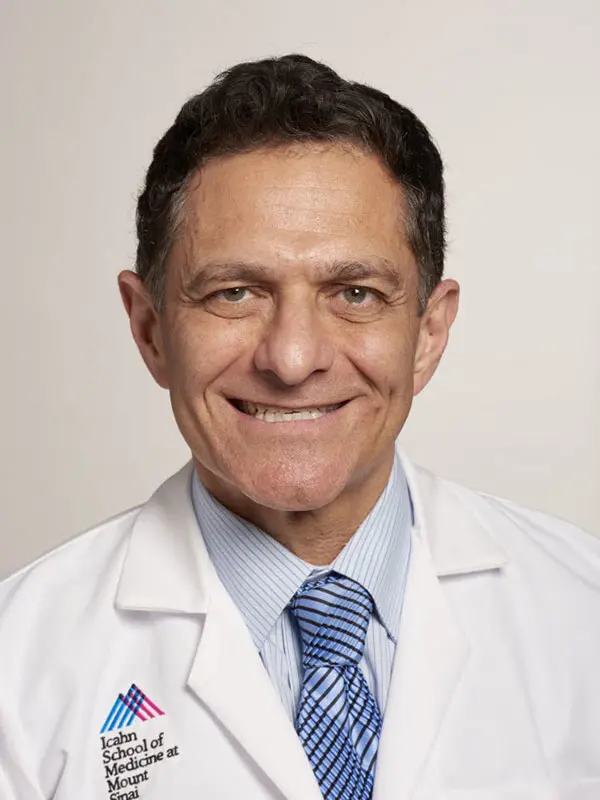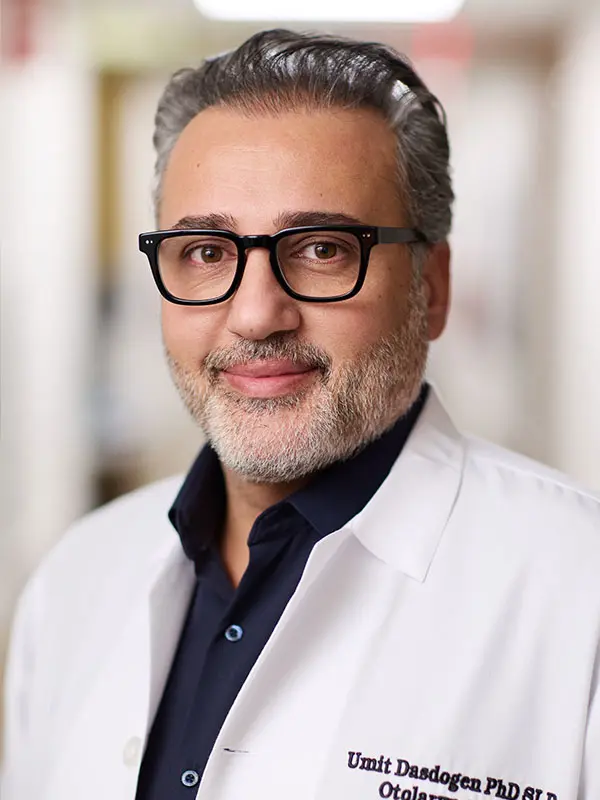Thirty years ago, when Mark S. Courey, MD, was starting his medical career in otolaryngology, he encountered a patient with laryngeal chondrosarcoma—a rare cancer that accounts for less than 1 percent of all laryngeal tumors. Therapies used to treat other types of cancer—such as radiation—are generally ineffective to treat this malignancy. Accordingly, Dr. Courey adhered to the standard of care, performing a total laryngectomy that, while life-saving, permanently changed the patient’s life and impacted the way he spoke, breathed, and swallowed. Much to Dr. Courey’s dismay, the standard of care for laryngeal chondrosarcoma remains the same to this day.
“A total laryngectomy is a very morbid, debilitating procedure,” says Dr. Courey, Division Chief of Laryngology and Vice Chair of Quality for the Department of Otolaryngology-Head and Neck Surgery at the Icahn School of Medicine at Mount Sinai, and Director of the Grabscheid Voice and Swallowing Center of Mount Sinai. “Even though patients learn to speak, talk, and swallow, they have a tracheal stoma. That is something the whole world sees. And it impacts your voice, which is, essentially, your second face.”
Was it possible, he wondered, to perform a partial laryngectomy and reconstruction of the larynx among patients with laryngeal chondrosarcoma, thus enabling them to retain the quality of life they enjoyed? He decided to find out.
Pioneering a Novel Alternative to Laryngectomy
Dr. Courey started exploring the possibility among laryngeal chondrosarcoma patients who did not require removal of the entire cricoid ring. He discovered that the creation of a support for one of the cricoarytenoid joints in the larynx would enable reconstruction of the rest of the airway with the trachea and then the unsupported cricoarytenoid joint could be sutured to the side of the larynx. “It did not collapse, and those patients could get rid of their tracheostomy,” says Dr. Courey.
In one case, he noted that the native rib graft that was harvested and fashioned as a cricoarytenoid support had dissolved over time, suggesting that a graft was not necessary among patients with one preserved cricoarytenoid joint. But among patients whose entire cricoid ring had been removed, it was clear some form of support was necessary. However, inserting cartilage alone would not ensure a good blood supply. “I asked my free flap reconstructive surgeon to provide vascularized tissue to wrap the cartilage so it would have a better chance of living, and it did,” he says.

This laryngeal chondrosarcoma was removed from a patient’s cricoid cartilage, which was destroying his airway. Dr. Courey cut out the cancer and then reconstructed the cricoid cartilage using a rib graft with a microvascular free-flap.
With that breakthrough, Dr. Courey had a viable alternative to total laryngectomy that could change the life of patients with laryngeal chondrosarcoma.
Refining a Technique
Dr. Courey has continued to refine his technique since he first pioneered the procedure in 2008. He typically starts by harvesting a segment of rib cartilage before removing the tumor, taking care to preserve the posterior cricoarytenoid muscle. He visualizes the nerves connected to the muscle to facilitate removal of the perichondrium. Using fascia lata from the patient’s thigh, he wraps the rib cartilage in vascularized free flap and sutures it in place to support the cricoarytenoid joint in its native position. Once that is sutured to the thyroid cartilage, he sutures the unsupported cricoarytenoid joint to the side of the larynx and closes the tracheal defect, following the same procedure for a standard clinical tracheal defect.
“The procedure takes approximately six to eight hours, and the patient has a temporary trach stoma for approximately a year while the airway heals and stabilizes,” says Dr. Courey. “Patients usually require a follow-up procedure either for advancement of their vocal cords, or removal of redundant tissue, which is best done endoscopically through the mouth. After a year, if everything is stable and there is no recurrence of the disease, we close the stoma.”
Looking toward the Future
Since joining the Health System in 2016, Dr. Courey has performed two partial laryngectomies. Currently, he is conducting a decade-long study of nine patients who have undergone partial laryngectomy in conjunction with his former workplace, the University of California San Francisco. The outcomes have been mainly positive.
“All but one have attained a decannulated airway without tracheotomy and hands-free speech,” says Dr. Courey. “The one patient who has not attained a decannulated airway underwent the procedure recently, and we are still working with them.”
Although Dr. Courey is not the only surgeon capable of performing a partial laryngectomy, he is, to his knowledge, the only one currently offering this modality of treatment. “It is a rare tumor and not all head and neck surgeons are as interested in voice preservation as I am,” he says. “That is the reason people come to me: They have a strong desire to preserve their voice.”
Dr. Courey is looking for new ways to achieve that goal and enhance patient outcomes. He is particularly interested in the potential of using biocompatible 3D printed tissue in larynx reconstruction. “One of my colleagues, Diana Kirke, MD, Assistant Professor in the Department of Otolaryngology-Head and Neck Surgery at Icahn Mount Sinai, is working on 3D imaging and reconstruction of the larynx for other issues,” he says. “If we had the biocompatible material that we could insert, that would eliminate the need to harvest rib cartilage and work out how to fashion it into the perfect fit.”
Featured

Mark S. Courey, MD
Division Chief of Laryngology, and Vice Chair of Quality, Otolaryngology − Head and Neck Surgery; Director, The Grabscheid Voice and Swallowing Center of Mount Sinai; and Professor, Otolaryngology−Head and Neck Surgery

Ümit Daşdöğen, PhD, CCC-SLP
Research Director, Speech and Language Pathology, The Grabscheid Voice and Swallowing Center of Mount Sinai; Assistant Professor, Otolaryngology